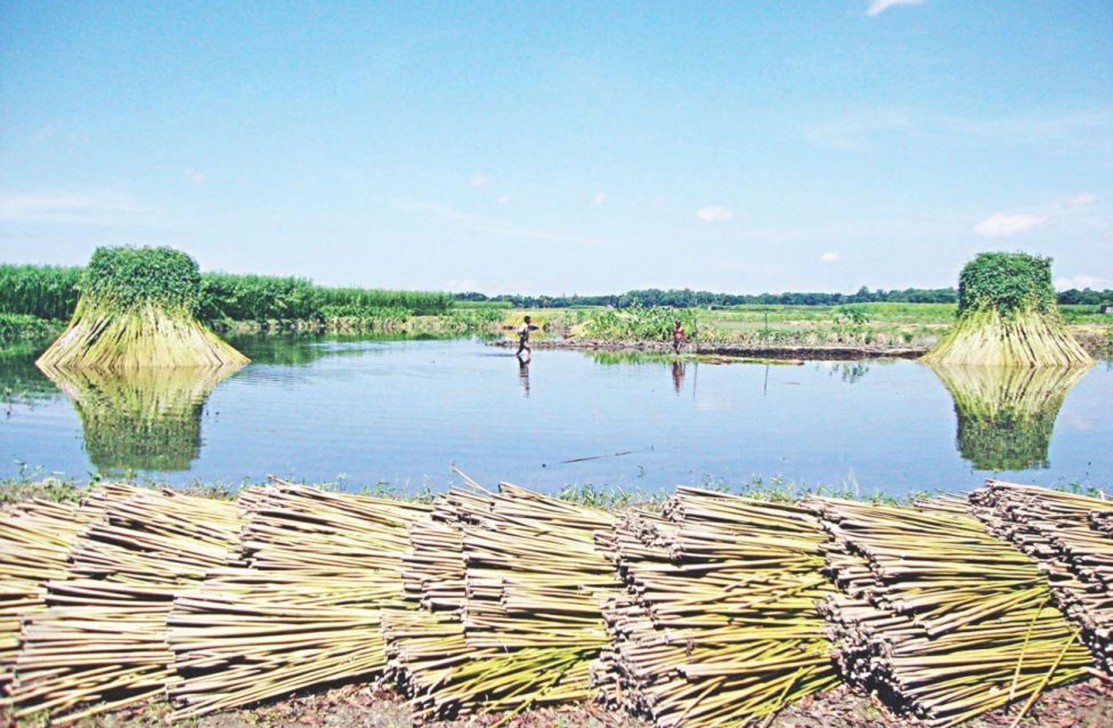Bangladesh and water: A complicated relationship

Dhaka, 21 July, 2020: Did you ever consider that water management may not always improve livelihoods? For a long time, we thought better water management will indeed make a better country of Bangladesh. And maybe you are thinking the same. And of course, it is true up to a certain level. But we sometimes seem to forget that our goal should not be to manage water issues better in Bangladesh. Rather it should be to enhance living conditions for people. And this simple truth turns our desire for improved water management into just one of the multiple means. There is a greater, further reaching goal beyond that.
Why is this important, you may ask? Well, we think, strict focus on only water management is blurring the perspective on the overall greater objective: improving livelihoods of people.
Nature has handed Bangladesh (also the home country of one of the authors, The Netherlands) with, let's say, a very peculiar share of all the forces there could be. Water is everywhere, flooding and cyclones and storms. This abundance of water seems to classify Bangladesh as one of the most uninhabitable places on earth. The misery doesn't seem to end here though. An old folk song goes: "Lalon morey jol pipashai, kaasse thakte nadi Meghna (Lalon suffers from thirst of water whilst river Meghna flows nearby)". Water here is either too much or too less. Now, take a step back, think again. The truth is far more nuanced, far more subtle, far more interesting. Bengalis proudly introduce their country as "Nodi-Matrik Bangladesh"—a word that compares the mighty rivers (Nodi) to a Mother (Mata), signifying the strong and gentle, unrelenting and yielding, protecting and releasing, demanding and unassuming power of mother's love. This largest delta of the world is a very fertile place, with a climate that is favourable for vegetation and thus for agriculture. And this very environment has enabled numerous Bengalis to carve out a living in the "most uninhabitable place on earth". Thousands of years. Millions of people. So, there must be something good here. There must be something very valuable here. Nodi-Matrik Bangladesh. Think again…
Let's step back to reality and rethink the purpose of water management. Why do we manage the water after all? Fact is, water management is only worth the effort we spend on it, if and only if, it ensures improvement of the life situation of the people. Only if it offers better changes for the children of these people, empowers people, makes life a little less marginalised.
The question we are raising is not whether water management could ultimately benefit the people. It undoubtedly does. We are rather concerned whether the current practice of large-scale top-down infrastructure-oriented management is the most effective way to address the water issues. And we think the answer to that question is negative. The current practice largely focuses on infrastructural approaches forcing engineering on people without properly understanding the needs and situation of the community. Such approaches seem to be willing to sacrifice functioning, well adapted livelihoods for optimised monocultures of agricultural production. This optimised agricultural production is obtained by interventions that can be summarised as Flood Control Drainage and Irrigation (FCDI) projects, which basically aims to optimise yields by obtaining full control over the hydrologic system. Some substantial projects of the past can be highlighted, such as the Flood Action Plan of the 1990s, the Coastal Embankment Projects, the larger irrigation and river barrages projects. All of these examples are spectacular in their failure. There are, however, other projects, just as spectacular—but this time in their successes. The most prominent one to highlight is of course the hugely successful Flood and Cyclone Forecasting and Cyclone Shelter programmes, but also projects, such as rehabilitations of wetlands and local small-scale adaptations such as the (century old concepts of) floating farming.
We would like to point out the difference between the two approaches—"fighting the natural system to make it behave" versus "adapting people's livelihoods to learn how to survive and live with the system". These two schemes direct to very different ways of water management. Most lessons from the past show that the first approach of trying to control the system has little chance of success and carries huge consequences disrupting social and environmental processes. We prefer the second approach. Although a little less ambitious, it has a larger success rate and lower impact from social and environmental disruption. This poses importance to serious efforts of involving local people, their knowledge and experience, in the strategic planning. And thus effectively abandon the perspective in which we aim for huge infrastructures to totally control the system.
Water management strategy in Bangladesh at present is fragmented and public participation in water projects is an utmost necessity. A united effort of water experts and the general public (local communities, farmers) through information sharing, diffusion of new technology and shared governance is required, practicing not just top-down approach but also prioritising bottom up perspective. It is high time we shift the perception from single-focused management action towards a less standardised and more reflexive process. Thus, enhancing stakeholders' capacity to adapt to complexities and uncertainties of future climate challenges, viewing water management not as a conventional or prescriptive system, rather as an evolving learning process. Water management is too important to leave it to just the water managers.
We all have heard the story before, we all have paid lip service to participatory water management, and we all have said that this time it will be different. But it is time that we really need to start evaluating our previous projects and learn from the mistakes we made then. Otherwise we are condemned to repeat the same mistakes again. We should know better by now.
Bangladesh has made incredible steps in improving livelihoods of people. From becoming self-sufficient in rice production to realising huge economic growth through textile, jute, seafood, shipbuilding, pharmaceutical industries and so on—the success is impressive and overwhelming. But the future still holds some challenges. Most of them are related directly or indirectly to water. And there are major and minor water related projects in the planning pipeline. Combined they will cost a fortune. Bangladesh has to make some very wise decisions about these projects. Are they worth these hefty investments or are they just white elephants? Rhetorical plans, exorbitant real construction costs, but with "benefits" yet to be realised! Are these the most efficient projects, or are they overambitious, not well in-tune with the local situations and the local needs? And in the end, the very hard question is: which way is the most effective to improve the quality of life? "Nodi-Matrik Bangladesh" surely has some very hard thinking to do to find the wise answers.

